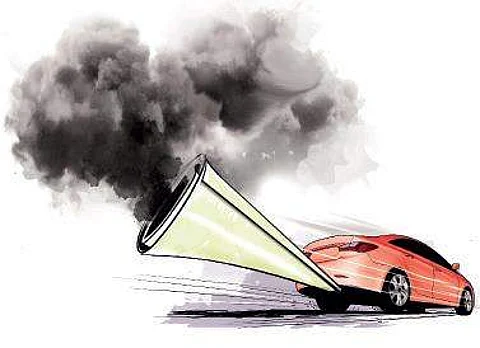

KOCHI: Economic growth in the course of urban development is causing serious air pollution problems everywhere. By 2050, outdoor air pollution is projected to become the top cause of environmental related deaths worldwide. The good news is that polluted air is not necessarily an inevitable by-product of the economy. Since engineers not only study the world as it is but also help create a world that has never been seen, it is technology that will come to the rescue.
There are two major ways that technology can help in combating pollution. One is by reducing pollution at source and the other is by effective urban planning to lower the pollutant concentration levels. Our tools have been used over the years in designing efficient systems which release pollutants into the atmosphere. PM (Particulate Matter) control technologies like bag/fabric filter, wet scrubbers, inertial collectors or cyclonic separators and electrostatic precipitators, can remove PM from flowing gas by force of induced electrostatic charge. This could include emissions from automobiles or from industries as well. Thus, selective catalytic reduction, electrostatic precipitation, Cyclones, and Scrubbers fall into this category of reducing pollution at source.
Effective urban planning is also a mean that can be used to lower pollutant concentration levels. This ensures that the level is below the acceptable levels post-release. Use of Computational Fluid Dynamics (CFD) as a tool for assessing thepollution-dispersion impact on the environment is increasing due to its cost-effectiveness and accuracy of predictions. CFD models can be effectively utilized to predict the dispersion and dilution of the pollutants in the atmosphere using theemissions, prevailing meteorological conditions and street configurations to determine the ambient air concentrations.

Engineers and designers can simulate a combination of equipment and process parameters over a wide range of applications causing pollution. A virtual building canbe modelled to reproduce the origin of an event. By modelling a room/area/city, not only can the origin of an event be reproduced, but also the transient fire and smokebehaviour, as well as the structured behaviour of the building, can be predicted.
The concentration of the fine particles can be projected and the building can be designed to resist extreme situations effectively. Several CFD studies have been performedwherein effective planning of the buildings both exterior and interior can help in ensuring that we live in an atmosphere wherein the pollutant levels are low. This includes modelling at a large scale including the entire urban area, wind velocity anddirection, terrains and the sources of the pollution.
CFD also provides a tool to examine complex wind condition of areas in detail and approximations can be done and a computational mesh will aid in improving quantitative results in affected areas. The flow patterns of the area can be studied toensure appropriate boundary conditions for the turbulence parameters and refinements near buildings can also be implemented accordingly.Engineering simulation thus helps to understand what is happening in a specific city and environment. As an expert in engineering simulation, it becomes our duty to address this major catastrophe and use technology to provide solutions. ANSYS will continue to collaborate in any manner to help combat pollution.
Harshad Karve,
Technical Director Asia, ANSYS
Views expressed by the author are his own